Notes
More Katrina in Retrospect: Blinded by the Light
On the tenth anniversary of the Katrina catastrophe, we’re looking back at the visual coverage of the disaster by way of our posts at the time, mindful of how much or little (in terms of visual politics and practice) has really changed. I wanted to share an entry originally published September 6th, 2005. It raises the question why the media published so few photos from inside the Superdome –the initial go-to destination for help and visual ground zero of the humanitarian disaster — and, more specifically, why the ones they did publish were so artful and distant.
A couple notes: First, excuse the size of some of these images. We were unable to find some of original media images, published subsequently in larger sizes. Otherwise, that was the scale of news photos published ten years ago.
Second, the photo above is one that wasn’t in our original post but did appear this week in several retrospectives and “Best of Katrina” slideshows, this one from USAT. Of course, the infotainment value of these retrospectives is a whole other dimension to this story, and informs the questions raised ten years ago by this post. These “beams of light” images prominently reappear in the flood of photo retrospectives this week.
Finally, if the photo above is ironic, evoking a (black) football player, maybe a wide receiver, running a pass pattern on the gridiron, reflecting how horrifically abnormal the Saints hometown had become, it’s also quite seductive. With sports culture consuming the attention of the American public, especially the middle and lower economic classes, the photo (a sporting piece of disaster info-tainment, and an artful one, indeed) surely erases the focus on the stands. Further, I’m challenged to say what it meaningfully spotlights. The crushing of fantasy? or NFL dreams?
Thursday, September 1st
Thursday, September 1st
Friday, September 2nd
Friday, September 2nd
Saturday, September 3rd
Certainly, most of the Katrina images last week were unvarnished and pulled no punches. At the same time, however, I’m wondering how much of what we saw was still edited according to the taste of a mainstream viewing audience (MSVA?) that tends to alternate in disaster preference between sensationalism and denial.
To illustrate, I go back to where I began in focusing on the Katrina disaster: The New Orleans Superdome. Years from now, when the country looks back on “the events of August 28th; 29th; 30th, etc.,” I wonder if they will recognize The Superdome (in combination with the Convention Center) as the “ground zero” or the emotional epicenter of the disaster. To what extent will this site still be recalled as a monument for the failure to stand up for the country’s most weak and vulnerable? Alternatively, we might also ask how much and for how long the Superdome might even remain a significant part of the recollection. (If you look at the latest cover of The Economist, for example, notice how the Superdome and the Convention Center merge with the city in a gauzy background.)
In questioning whether the painful memory of the Superdome will be honored and preserved, I can’t help wondering if the recording and preservation of the event was largely inhibited from the start.
Because I was focused on The Superdome from the beginning of the crisis, I scanned the media every day for visual evidence of the trauma, fear and squalor inside that stadium. (And Now We Are In Hell — Link). Somehow, however, I just never came across images of the despair as so painfully described in the written accounts.
Finally, on Saturday morning — coinciding with the near-total evacuation of the building — I decided to go back through the YahooNews photos (using the search terms “Katrina” and “Superdome”) to find the images I must have missed which would illustrate “life” inside that building over those past five days. Starting from Saturday and working backward, I went through all 200+ newswire photos until I arrived at Monday, August 29 — which was the point at which people began filling up the stadium.
What I discovered was disturbing but not surprising.
All I found were more of these beautiful (some might even say almost spiritual or mystical) depictions of the sun’s rays piercing the dome (with most evidence of decrepitude or suffering left to the margins, usually at “ant size” scale). Beyond these remote, long angle shots, I only came upon a single close up from inside the building after Tuesday. (The picture showed a fairly clean man posing while holding up a sign for help.)
So my question is, weren’t any “non-romanticized” photos taken inside the Dome after the first day or so? And if so, why haven’t we seen any? And if not, why not?
Certainly, there were quite a few news photographers inside the building throughout the week. Would these intrepid people argue that photos could only be taken from a symbolic Green Zone? And what about amateur images? I understand most local residents arrived with next-to-nothing, but what about those tourists who still had their luggage? In light of the images that emerged during the London subway attacks, is it possible there weren’t even any cell phone photos?
Or, is it that the media (serious or tabloid) didn’t care to offer the cash to uncover such pictures?
Finally, I had a few observations about these poetic images themselves.
Considering the almost biblical nature of these pictures, I couldn’t help wondering what happened to the major voices of the Christian right last week. Watching the wretched scenes from the outside of these fated buildings, I thought: If there ever was a moment (let alone, a whole week) where the terms “Pro-Life” or “Compassionate Conservatism” came into play, it was this one.
Regarding the mass media, I applaud the efforts of journalists, editors and correspondents (many working for heavily anesthetized Bush-era news organizations) who stuck their necks out further and opened their eyes wider than they have in a long time. However, intense trauma is always going to disturb a lethargy. Short of that, the inclination to convert inhumanity into art or spectacle is something one must fight every day.
As I look at these haunting photos, however, there’s a place in the back of my mind that keeps thinking about Abu Ghraib. Marveling at these beautiful beams of light — like the fingers of God — I wonder how things would have differed if the Abu Ghraib photos had been taken on a brilliantly sunny day, next to windows, from at least fifty yards away.
(lead post image — not from original post: photo: JOHN ROWLAND : THE LAFAYETTE DAILY ADVERTISER. AUG. 30, 2005 | NEW ORLEANS, LA. from original post: image 1: STAFF PHOTO/ DAVID GRUNFELD.Louisiana Superdome. Wednesday, August 31, 2005. NOLA.com. image 2:Marko Georgiev for The New York Times. New Orleans Superdome. September1, 2005. NYT.com. image 3: Khampha Bouaphanh — Fort WorthStar-Telegram. Thursday, September 1, 2005. At WAPO.com. image 4.)REUTERS/Jason Reed. Louisiana Superdome. September 2, 2005. YahooNews. image 5: Tyler Hicks/The New York Times. September 3, 2005.New Orleans Superdome. New York Times page A11 and nyt.com.)
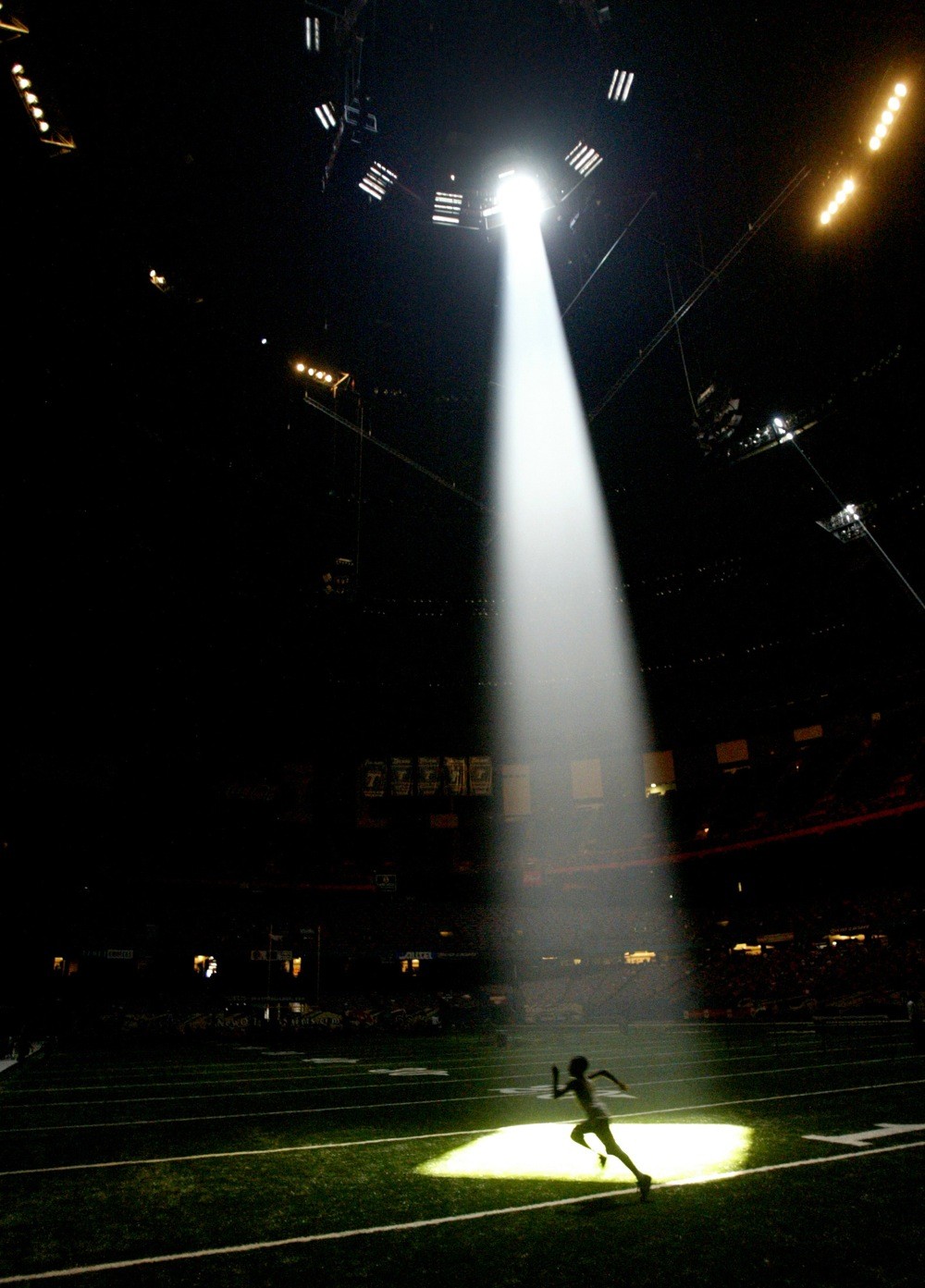
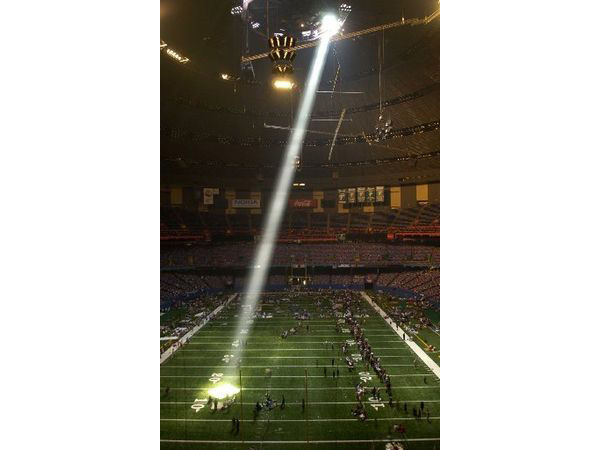

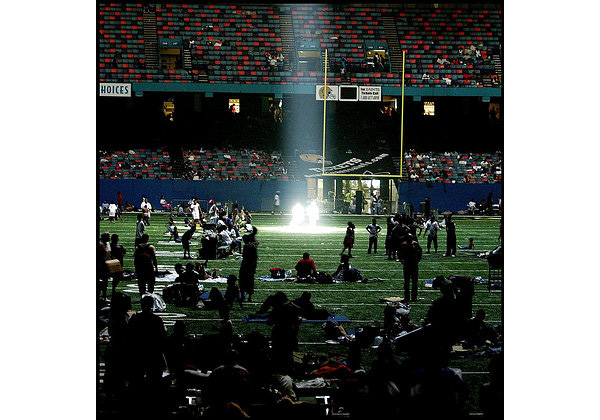
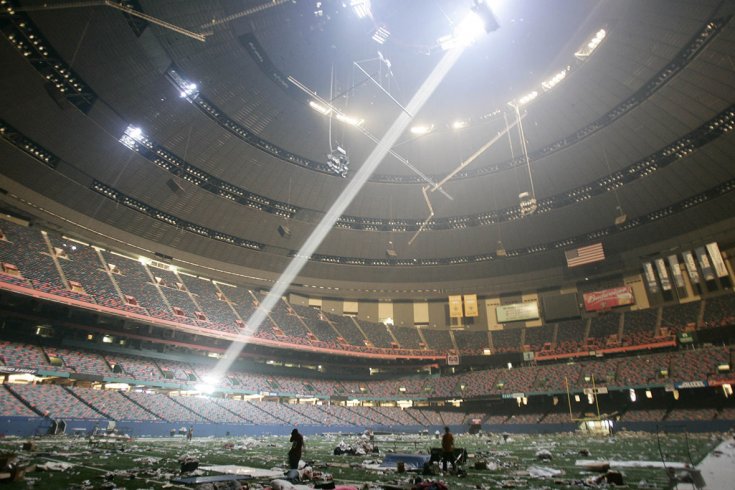
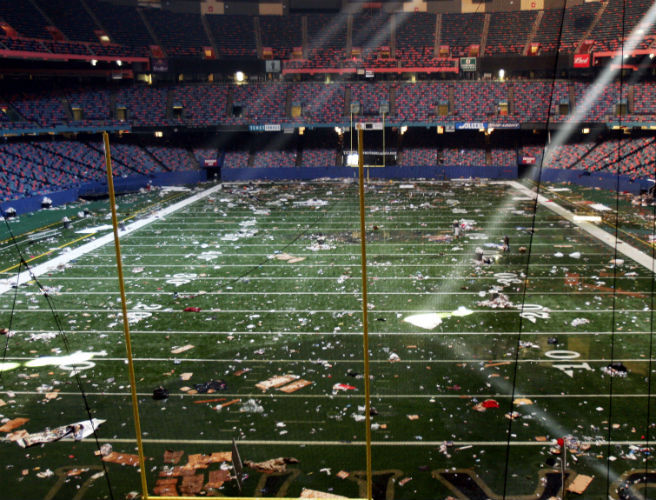
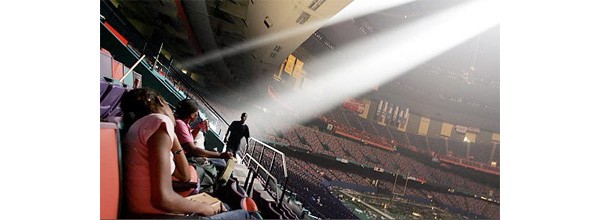
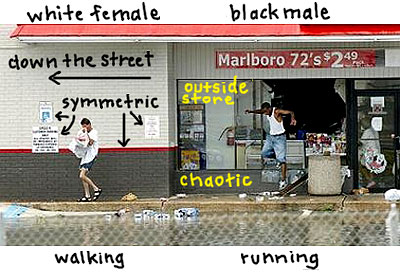
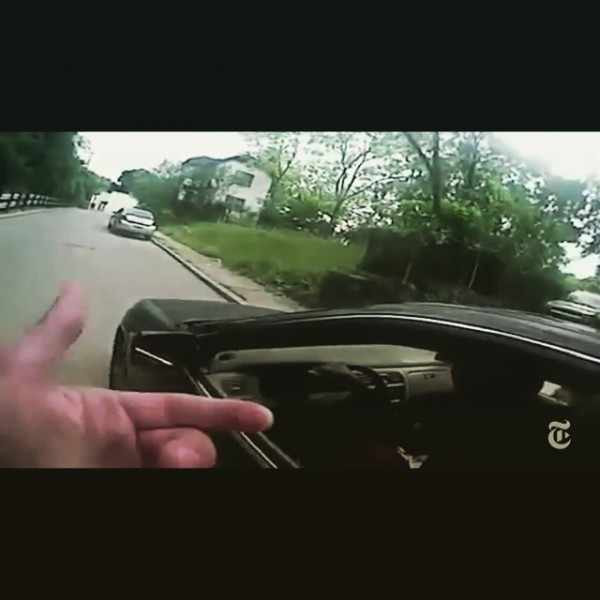
Reactions
Comments Powered by Disqus